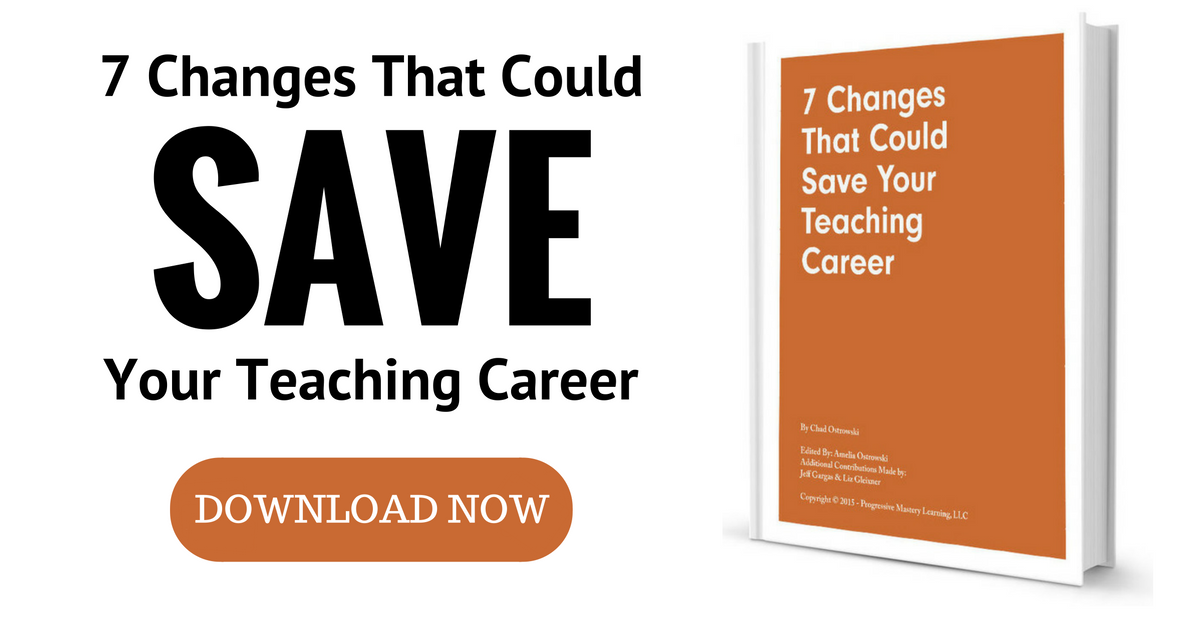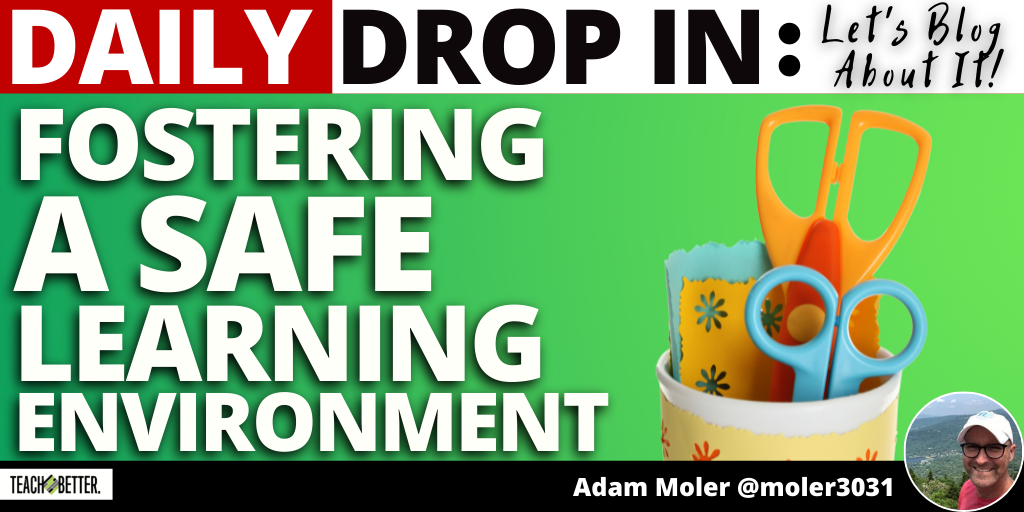TL;DR:
- We need to foster a safe learning environment for students and ourselves.
- Focus on the students, not your subject area.
- Ask what’s going on before you correct a student.
- Write a welcoming message on your board daily and greet students using their name.
- Check in once a week with kids to see what you might want to change in your classroom environment
- Lesson plan in a student-centered manner.
Adam joined Rae on the Daily Drop In to talk about building relationships with students.
Teaching Social Studies
Now more than ever, fostering safe learning environments for our students and ourselves is critical. To say the least, the last three years have been very trying for all.
I’m currently in my 7th year of teaching social studies at New Richmond Middle School in New Richmond, Ohio. Student engagement with social studies has always been a top priority for my classroom. Little did I know that fostering a safe learning environment was a natural part of this engagement. My focus was too much on social studies rather than the students in the classroom. This all changed 3 years ago.
My shift went from social studies to students. I start every year telling the students, “I don’t care about social studies. Social studies is secondary here.” I care about the success and happiness of the students who come into room 505. Click To TweetMaking a Change
A few years ago, I had a very trying group of 7th and 8th-grade students. I questioned my career and wanted to quit. Going back to teaching tennis seemed appealing. It was then I read a #roommessage by Monte Syrie on Twitter. It stated, “I’ve come to terms that what I teach you will fade away. However, you will never forget how you felt in here.” Wow! A powerful statement that clicked with me. At that moment, it wasn’t about social studies anymore.
My shift went from social studies to students. I start every year telling the students, “I don’t care about social studies. Social studies is secondary here.” I care about the success and happiness of the students who come into room 505. Here are the ways I care and build a safe environment for students.
“Thanks for not acting like you’re better than us.” This statement was said to me a couple of times this year by two different students. I structure my class to listen to students. If something seems out of place, or students are disengaged, I don’t jump to conclusions. I have conversations with students to see what’s going on.
A Safe Learning Environment: Greeting All Students
I begin most class periods by saying every student’s name and asking them how they are doing. This gives children a chance to speak. It gives them a chance to listen to each other. It’s no coincidence that Starbucks says your name out loud after they complete your drink. Hearing your name kind of perks you up a bit. I try to speak to every student at least twice in a class period.
A Safe Learning Environment: Daily Messages
Inspired by Monte Syrie, I write a new message on my board every day. Most days I arrive at school by 6:00 AM and the first thing I do is put a marker to the board and start writing. I don’t know where the marker, or my mind, will take me. I just start writing. At times I have wondered if students read them. They do. Reading my messages is an important part of their day.
A Safe Learning Environment: Friday Check-Ins
Every Friday I do a check-in with students. I share out a Google Form and I ask students three to four things:
- How are you feeling? Why?
- What questions do you have about what you learned this week?
- What do I need to do better?
- Share a Dad Joke
On a weekly basis, we vote on dad joke submissions. The winning joke of the week gets posted on my board and the winner gets a “Joke of the Week” winner sticker. It’s important to laugh and have fun in class.
Besides honoring the Dad Jokes, I read every question and concern from students and respond in a timely manner. This builds a culture of trust, respect, and fun.
[scroll down to keep reading]
A Safe Learning Environment: Lesson Design
I use EduProtocols daily in my class. If you are unfamiliar with EduProtocols, please check out the EduProtocols site. EduProtocols are lesson frameworks developed by Jon Corippo and Marlena Hebern. How do these tie into creating a safe learning environment? Students are doing the work in class. Students are driving the learning experience. The lesson frames free me up to walk around and teach. The lesson frames allow me to differentiate, modify, and accommodate students naturally and in multiple ways.
As I’m circulating around the room, I can build relationships with students and tailor my teaching to students’ needs. I also focus on differentiating lessons and instruction for students. A large part of my differentiation is allowing student choice. Offering choice communicates to the students that we respect them and their decisions.
Ultimately, there are many aspects and pieces that go into creating a safe learning environment for students.
About Adam Moler
Adam Moler is a social studies teacher at New Richmond Middle School located just outside of Cincinnati, Ohio. His goal for 505 is creating a student-centered room with choice that focuses on the 4 C’s, and getting students more involved with learning history. These are the ways I have found to be successful for students, and me, in room 505.



